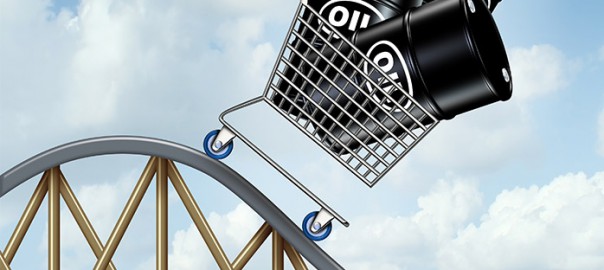Five years ago, I wrote an article for Reuters titled “Goldilocks and the Three Fuels.” In it, I discussed what I call the Goldilocks price zone for oil, natural gas and coal, a zone in which prices are “just right” — high enough to reward producers but low enough to entice consumers. Ever since the start of the fossil- fuel era, such a zone has existed. Sometimes price boundaries were transgressed on the upside, sometimes on the downside, but it was always possible to revert to the zone.
But now, the Goldilocks zone for oil has ceased to exist. This will have staggering consequences throughout the economy for the foreseeable future.
During the past decade, the Goldilocks zone for oil steadily migrated higher. As conventional crude reservoirs depleted and production rates leveled off, drillers had to spend proportionally more to develop the capacity to pump the next marginal barrel. Oil prices soared from $30 a barrel in 2005 to nearly $150 a barrel in 2008, collapsed during the economic crisis, then clawed their way back to roughly $100 a barrel, a price that was maintained through mid-2014. But the economy did not do well during this period. Despite massive bailouts, stimulus spending and low interest rates, the recovery following the 2008 crash was anemic.
However, at $100 a barrel, the oil price was high enough to incentivize fracking. Small, risk-friendly companies leased land and used expensive drilling techniques to free oil from rocks that geologists had previously described as too impermeable to bother with. This entailed a tenuous business model that required not only high oil prices but easy money as well, as low interest rates enabled producers to pile on enormous amounts of debt.
Oil production in the United States rose sharply as a result, and this eventually had an impact on prices. Since mid-2014, the oil price has declined by half, settling around the historic, inflation-adjusted mean price of $50 a barrel. Consumers are much happier than they were with oil at $100 a barrel, but producers are wilting. The American petroleum industry has seen more than 75,000 layoffs, the balance sheets of fracking companies are bleeding and drilling rigs are being idled by the score.
For consumers, experience suggests the acceptable oil-price zone is $40 to $60 a barrel in today’s dollars; higher than that, goods and services, particularly transportation, become more expensive than current spending patterns can handle. For producers, the acceptable zone is more like $80 to $120 a barrel; lower than that, upstream investments make little sense, so production will inevitably stall and decline — eventually making consumers even less happy.
You will have noticed that there is no overlap. An oil price of $70 a barrel would not be high enough to give the industry a rebound of confidence sufficient to inspire another massive round of investment. Clearly, consumers would be happier with $70-a-barrel oil than they were with $100-a-barrel oil, but if $70 isn’t a high enough price to incentivize production growth, then it’s not really in the Goldilocks zone.
According to the narrative emanating from most mainstream energy economists, oil production rates will soon slow, prices will rebound and everyone will be happy. That narrative misses the all-important news that Goldilocks is dead. There is no longer a price that everyone can live with. And that’s a recipe for price volatility.
For oil traders, price volatility may offer opportunities for profit. But for everyone else, it is treacherous. Price volatility only hints at the real extent of our peril: We have built an economic system overwhelmingly reliant on a nonrenewable, depleting resource. This is not a sustainable situation. Unless our dependency on oil somehow magically disappears, we are in for a wild ride on an unmapped road.
Source: Reuters
